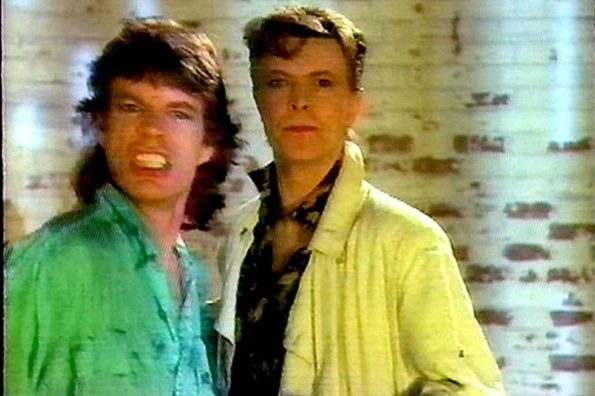Search
To search for an exact match, type the word or phrase you want in quotation marks.
A*DESK has been offering since 2002 contents about criticism and contemporary art. A*DESK has become consolidated thanks to all those who have believed in the project, all those who have followed us, debating, participating and collaborating. Many people have collaborated with A*DESK, and continue to do so. Their efforts, knowledge and belief in the project are what make it grow internationally. At A*DESK we have also generated work for over one hundred professionals in culture, from small collaborations with reviews and classes, to more prolonged and intense collaborations.
At A*DESK we believe in the need for free and universal access to culture and knowledge. We want to carry on being independent, remaining open to more ideas and opinions. If you believe in A*DESK, we need your backing to be able to continue. You can now participate in the project by supporting it. You can choose how much you want to contribute to the project.
You can decide how much you want to bring to the project.

For more than a decade, contemporary art has been approaching choreography. Several exhibitions and events have situated performance and dance forms (and formulas) in prominent positions in the programmes of museums and art centres. Looking back and sounding out a historiography that is inextricable from the official nature of the global north, we find numerous examples: the creation of Performa by Roselee Goldberg and the seven Seven Easy Pieces by Marina Abramovic at the Guggenheim, both in 2005 in New York, marked a trend that emerged between the living and the dead, between the historical legacy of performance and its institutionalisation, between criticism of the relational and success before audiences hungry for experiences (the magic word). It’s important to note the attention received by artists/choreographers like Xavier Le Roy, Tino Sehgal, Anne Teresa De Keersmaeker, La Ribot, Boris Charmatz, Maria Hassabi, Trajal Harrell, Jérôme Bel, William Forsythe, Àngels Margarit, Ralph Lemon, Michael Portnoy, Alexandra Pirici, Sol Picó and Roman Ondák, among many others, and exhibitions like Move. Choreographing You – Art and Dance since 1960 (Hayward Gallery, 2010) or Choreographing Exhibitions: A Book and a Festival (curated by Mathieu Copeland, 2013), to name but two, along with the recovery or exaltation of masters like Pina Bausch and Merce Cunningham, the Judson Church generation (Lucinda Childs, Simone Forti, Yvonne Rainer, Trisha Brown, Meredith Monk, Robert Morris and Steve Paxton), Anna Halprin, and also Carolee Schneemann, Joan Jonas, Allan Kaprow and Yoko Ono. Another factor to be borne in mind is the organisation of festivals, and the creation of initiatives and departments dedicated to performance in museums to ensure and sophisticate the conservation and presentation of arts of/in movement, the impact of academic programmes, magazines and publications, the construction of emblematic spaces, theatres (black cubes), lobbies and auditoriums to welcome these programmes. Paradigmatically, MoMA set up its Department of Media and Performance Art in 2009, and its new extension will boast a space called The Stud that will stage all sorts of performances.
However, as in the case of the legendary origins of video, the impulse of choreography becomes a narrative that we repeat like a litany: in 1956 John Cage began to teach regularly at the New School for Social Research; in all, up until 1960 he would teach five courses there, two of them dedicated to composition, two more to the work of Virgil Thomson and Erik Satie, and the last one to mycology (yes, fungi). In his composition lessons, Cage shaped a musical panorama of the period (concrete and electronic music) exploring notions like duration, morphology, timbre, range, and introducing his personal combination of I Ching, Indian philosophy and European avant-garde marked by the relationship between Schoenberg and Duchamp. Among his students were Kaprow, George Brecht, Al Hansen and Dick Higgins, in the early days of Happenings and Fluxus. A few years later, in the early sixties, another of the attendants, Robert Ellis Dunn, would be teaching composition to a new generation in Merce Cunningham’s studio, and this group would eventually form the Judson Dance Church.
This line is still alive and although I would like to discover another perspective, it is held to be the main influence not only for contemporary dance but also for contemporary art. The Cage-Cunningham compositional vision, divested of expressivity, narrativity and representativity, focuses on an analysis of raw matter, sound or movement in order to understand it as something that creates us — not as something that is prefigured or determined by who performs it, but something that is what it is, that is at once made and composed, that is always present. Hence its interest in ordinariness (not so much for the equation art = life, a legacy of the avant-garde) but for the indeterminacy of life itself. The introduction of chance operations is another way of composing that eludes acquired mental schemes and conventions simultaneously liberating performers in a game who are unaware of how it ends. The use of instructions or objects as another way of setting the rules for movement, the task performances by Simone Forti and the No-Manifesto de Yvonne Rainer also point to Cunningham as a forerunner and reinforce the performative field as a space of continuous definition of the present and the possible (virtual, as Deleuze and Guattari would say). It is in this field where we discover a notion of choreography that escapes the writing of movement (notation, dating and composition) and becomes a form of relationality, organisation of movement and environment that causes an impact on artistic practice as a space for criticism and the formulation of other lifestyles.
Since the nineties, the concept of choreography has evolved in this direction. Particularly interesting is the work of André Lepecki, who makes this distinction between choreography as movement defined by the physical conditions of the body, age or gravity of the planet, and choreography as union and alteration of the vital continuum, open to an unfinished production that challenges the way we relate to one another, being as we are bodies in transformation and not stable, hierarchical and identified entities. Thus, the relationship between the matter-life ensemble leads us to multiple combinations in which movement is a reflection of an internal mobility, the performativity of the subject and a way of generating critical thought (awareness of what one is and does). Whether it be the way in which we adapt to the handle of a teapot or to a neighbour we meet in the lift, it is daily choreography that shapes us, not the other way around. Moreover, we should highlight how over the last decade this presence of the object has also provoked a connection with new materialisms in which the agency of the object, both secular and animistic, has exceeded the limits of object and subject. This relationship, already present in the minimalism of Judson Church, has also experienced new moments of splendour as a workspace for many artists who as soon as they think of the situation and arrangement of different elements and the reciprocity between object and body introduce choreography into their works. The indeterminacy of Cage-Cunningham (the open work) transformed into the mainstream space of contemporary art.
When we approach choreographic thought in this way it becomes a weapon for subverting usual conventions and formalisms. The famous Trump handshake is an example of how to take advantage of movement as a destabilising power. Today’s global problem is that the choreography of rebellion is controlled by male tyrants united (Bolsonaro being the last fanatic to appear on the international stage). Something has been lost in the passage from neo-liberal globalisation to a-liberal democracies, the neo-fascist wave can’t make us forget how movement can be a form of opposition, resistance and revolution. Emma Goldman knew that the body and its activation alongside other bodies has a transformative capacity that is able to make us leap towards other forms of communication and connection.

Xavier Acarín is fascinated with experience as the driving force of contemporary culture. He has worked in art centres and cultural organizations both in Barcelona and New York, focussing in particular on performance and installation.
"A desk is a dangerous place from which to watch the world" (John Le Carré)